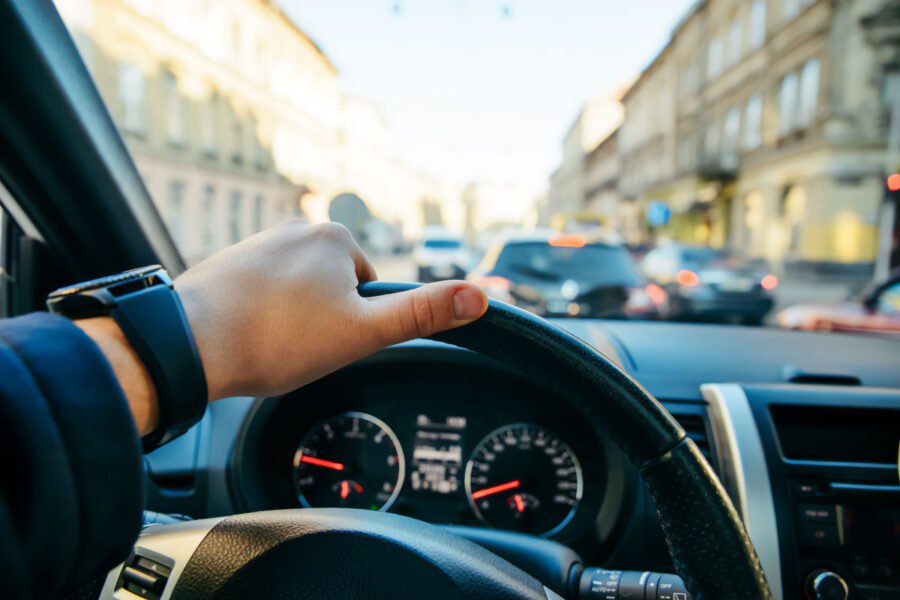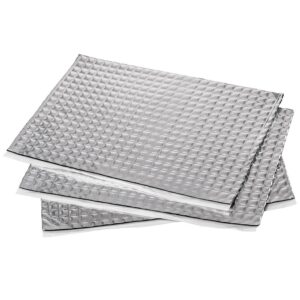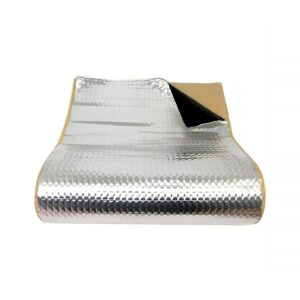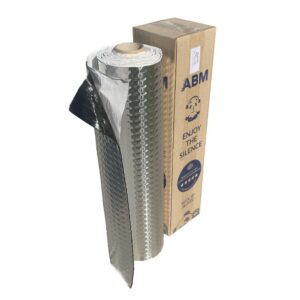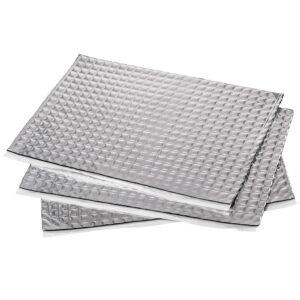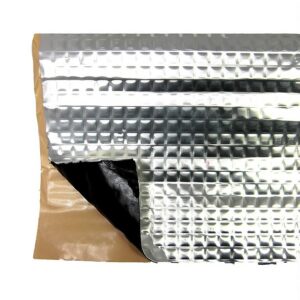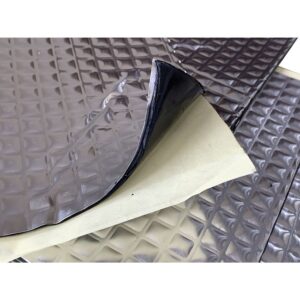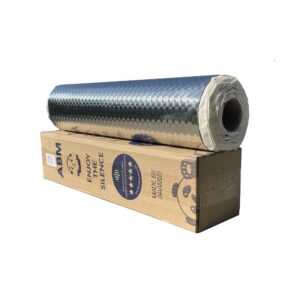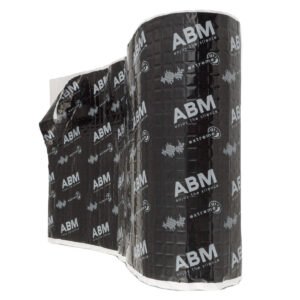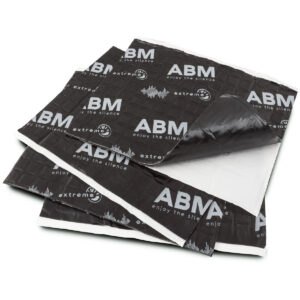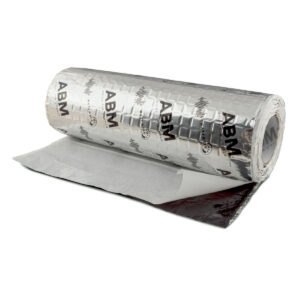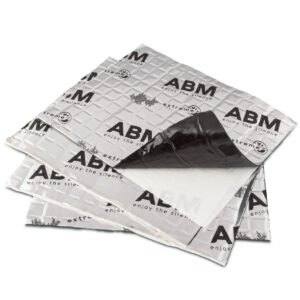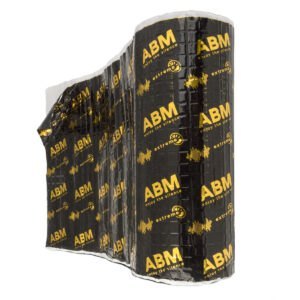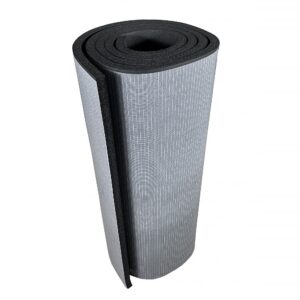Car soundproofing is a modification that is becoming increasingly popular among drivers. However, many vehicle owners wonder about the impact of such a modification on driving safety. Driving comfort is one thing. Safety is the second, equally important issue.
The answer to the question of soundproofing safety is not straightforward. On one hand, noise reduction can improve driver concentration. On the other hand, it may limit the audibility of important warning signals. Scientific studies indicate complex relationships between acoustic comfort and driving safety.
Understanding all aspects of soundproofing allows for an informed decision. Knowing both the benefits and potential risks is key.
How Cabin Noise Levels Affect Driver Concentration
Noise inside the car cabin directly affects the driver’s psyche. Studies show that sound levels above 85 decibels can cause fatigue and stress. Prolonged exposure to noise triggers the release of cortisol—the stress hormone—which negatively impacts the brain’s cognitive functions.
Mechanisms of Noise Impact on Concentration
Constant noise during driving disrupts information processing in the brain. White noise from the engine, tires, and wind requires additional energy from the nervous system to filter out unwanted sounds. This results in faster fatigue and reduced attention.
Reducing noise by just 3 decibels can significantly improve driving comfort. This difference corresponds to halving the sound energy. Drivers experience less tension and can better focus on the road.
Impact on Reactions and Decision-Making
Excessive cabin noise impairs the ability to react quickly. Acoustic stress affects the brain’s prefrontal cortex, responsible for planning and impulse control. Drivers in quieter cars demonstrate better hazard anticipation skills.
Lowering noise levels improves communication quality among passengers. Better audibility eliminates the need to raise voices. The driver can concentrate on driving rather than listening.
Main Sources of Cabin Noise:
- Engine and exhaust system sounds
- Tire noise on the road surface
- Aerodynamic wind noise
- Body panel vibrations
- Sounds from the air conditioning system
Research shows that reducing cabin noise by 5 decibels can decrease driver fatigue by 20%. A quieter cabin also promotes better sleep quality during travel breaks. Drivers in soundproofed vehicles report fewer headaches after long trips.
Optimal Noise Levels in the Cabin
The ideal volume inside a car cabin ranges between 50-60 decibels. This level provides comfort without isolating the driver from their surroundings. Modern premium cars achieve noise levels below 55 decibels when driving on highways.
Excessive soundproofing can be as problematic as having no insulation at all. An overly quiet cabin may lead to losing contact with the environment. The driver might miss important warning signals from outside the vehicle.
When planning cabin soundproofing, the goal should be to reduce noise by 8-12 decibels compared to the factory condition. This level of reduction provides a significant improvement in comfort while maintaining the audibility of external warning sounds.
The Impact of Soundproofing on the Audibility of External Warning Signals
The audibility of warning signals is a key element of road safety. Emergency vehicle sirens, car horns, and ambient warning sounds inform the driver about hazards. Excessive soundproofing can significantly limit the perception of these important sounds.
Studies conducted on emergency vehicles show that a siren signal is audible from about 100 meters away in a standard car. In a vehicle with intensive soundproofing, this distance can shrink to just 15 meters. This means a dramatic reduction in the driver’s reaction time.
Masking of Warning Sounds
The masking effect occurs when one sound covers another with a similar frequency. Music played in the car can mask emergency vehicle sirens. Cabin soundproofing can paradoxically intensify this effect, forcing drivers to listen to music at higher volumes.
The critical frequency range for emergency sirens is between 500-4000 Hz. Soundproofing materials often most effectively dampen these frequencies. Drivers in heavily soundproofed vehicles may not hear an approaching ambulance or fire truck.
Differences in Directional Perception of Sounds
Cabin soundproofing also affects locating the source of a sound. A driver may hear a siren but be unable to determine from which direction the emergency vehicle is approaching. This complicates making the correct decision to yield right of way.
Frequencies of warning signals:
- Alarm sirens: 400-1200 Hz
- Car horns: 300-500 Hz
- Reversing signals: 1000-2500 Hz
- Pedestrian warnings: 2000-4000 Hz
Modern emergency vehicles use variable frequency systems. This makes it harder for constant ambient noise to mask their signals. However, excessive soundproofing can negate these safeguards.
Professional soundproofing should preserve the transmission of alarm signal frequencies. Experienced installers apply selective damping that reduces engine noise while maintaining siren audibility.
Tip: When testing soundproofing, it’s worth checking the audibility of warning signals with music playing. The driver should be able to hear a siren from at least 50 meters away at standard radio volume.
Scientific Research on the Relationship Between Acoustic Comfort and Driving Safety
Scientific research on vehicle acoustics has been developing rapidly since the 1980s. Research institutions in Europe and North America conduct systematic analyses of noise impact on driving safety. The results show complex relationships between acoustic comfort and driver concentration.
The University of Stockholm conducted a long-term study on a group of 2,000 professional drivers. It was shown that reducing cabin noise by 10 decibels decreases the number of driver errors by 15%. At the same time, drivers in cabins that are too quiet (below 45 dB) exhibited problems with speed assessment.
The Impact of Noise on Physiological Reactions
Physiological studies confirm the negative impact of excessive noise on the driver’s body. Cortisol levels in the blood increase proportionally to the intensity of sounds in the cabin. Prolonged exposure to noise above 70 decibels leads to chronic stress.
Measurements of brain activity during driving show increased activity in areas responsible for filtering sounds. This extra brain work comes at the expense of concentration on driving the vehicle. Drivers in quieter cabins show greater activity in the prefrontal cortex, which is responsible for planning and decision-making.
Key Research Findings:
- Reducing noise by 5 dB decreases fatigue by 20%
- Optimal cabin noise level: 50-60 dB
- Noise above 80 dB increases accident risk by 25%
- Excessive soundproofing (below 45 dB) worsens speed assessment
- Noise reduction improves sleep quality during breaks
Studies on Perception of Warning Signals
The German Institute for Road Safety Research conducted tests on a driving simulator. They examined drivers’ reactions to alarm signals under various acoustic cabin conditions. The results showed the critical importance of maintaining audibility in the 500-2000 Hz frequency range.
Drivers in heavily soundproofed vehicles needed 2-3 seconds longer to locate the source of an alarm signal. This additional time can be decisive in emergency situations. Researchers recommend selective soundproofing that reduces low frequencies while preserving siren audibility.
Long-Term Effects of Noise Exposure
Longitudinal studies of professional drivers revealed a link between noise levels and cardiovascular disease development. Drivers exposed to prolonged noise above 75 decibels showed elevated blood pressure and increased risk of heart attack.
At the same time, studies demonstrated a positive effect of moderate soundproofing on drivers’ sleep quality. Better rest translates into improved concentration and faster reaction times the next day. Therefore, an optimal level of soundproofing can contribute to improved safety in the long term.
Tip: When planning soundproofing, it is advisable to follow scientific research findings and aim for noise reduction of 8-12 decibels compared to factory settings. This level provides health benefits while maintaining audibility of warning signals.
Differences in Perception of Ambient Sounds Between Soundproofed and Non-Soundproofed Vehicles
The perception of ambient sounds in soundproofed and non-soundproofed vehicles differs significantly. Drivers in standard cars are constantly exposed to a wide range of external sounds. This includes traffic noise, engine sounds from other vehicles, horns, and warning signals.
In soundproofed vehicles, this acoustic panorama undergoes significant changes. The reduction of background noise makes some sounds more distinct, while others may be completely muffled. These changes have a direct impact on the driver’s situational awareness.
Changes in the spectrum of audible frequencies
Soundproofing materials act selectively on different sound frequencies. Low frequencies (below 500 Hz) are usually the most effectively dampened. This means that deep diesel engine noises or tire noise become less audible.
Mid frequencies (500-2000 Hz) include most communication sounds. Horns, sirens, and warning signals fall within this range. Excessive attenuation of this part of the spectrum can lead to problems with threat perception.
Auditory adaptation of drivers
Drivers operating soundproofed vehicles undergo a process of auditory adaptation. The brain gets used to the quieter environment and becomes more sensitive to subtle sounds. This increased sensitivity can be both a benefit and a problem.
Differences in sound perception:
| Type of Sound | Uninsulated Vehicle | Insulated Vehicle |
|---|---|---|
| Own Engine Noise | Very Loud | Significantly Reduced |
| Sounds of Other Vehicles | Easily Heard | Partially Muffled |
| Emergency Sirens | Heard from 100m | Heard from 30-50m |
| Passenger Conversations | Difficult Due to Noise | Clearly Better |
Research shows that drivers in soundproofed vehicles often compensate for limited audibility with increased visual attention. They check mirrors more frequently and are more alert to the light signals of emergency vehicles.
Impact on Communication with the Surroundings
Soundproofing significantly affects the driver’s communication with the road environment. In a standard vehicle, a driver can hear a horn signal from a distance of 200-300 meters. In a heavily soundproofed car, this distance shortens to 50-100 meters.
Similarly, the perception of sounds from one’s own vehicle changes. Drivers in soundproofed cars may have difficulty assessing engine revolutions or tire grip. This can lead to an inappropriate driving style or delayed response to technical problems.
Tip: Drivers switching to a soundproofed vehicle should undergo an adaptation period. It is advisable to drive more cautiously at first and check mirrors more often until accustomed to the changed perception of surrounding sounds.
Materials for Effective Soundproofing in the ABM Insulation Store
ABM Insulation is a renowned Polish manufacturer of soundproofing materials, founded in 2010 in Zabki near Warsaw. The company specializes in producing high-quality butyl mats and rubber foams. ABM Products are used in over 40,000 vehicles worldwide.
The company offers comprehensive solutions for soundproofing cars, buildings, and industrial machinery. All products are made from environmentally friendly materials without harmful substances added. ABM Insulation provides a 5-year warranty on its products, which attests to their high quality.
ABM Professional Butyl Mats
ABM Professional Butyl Mats are the company’s core product designed for effective vehicle soundproofing. Made from high-quality butyl and aluminum foil with a thickness of 0.1 mm, they provide excellent acoustic and thermal insulation. They are available in sheets and rolls of various sizes, ranging from 0.5 to 2 m².
The product features a strong self-adhesive layer that does not require heating during installation. The mat is crack-resistant due to its asphalt-free formula. Operating temperature ranges from -40°C to 170°C, ensuring versatile application.
Main applications of ABM Professional mats:
- Soundproofing car hoods, roofs, and doors
- Insulating trunk lids and floors
- Soundproofing compressors and industrial machines
- Insulating ventilation ducts in construction
- Soundproofing metal doors and window sills
Butyl Soundproofing Mats ABM Professional in the ABM Insulation store
ABM Xtreme Butyl Mats – Premium Class
ABM Xtreme is a top-of-the-line butyl mat designed for the most demanding applications. This premium product offers exceptional effectiveness in reducing noise, rattling, and vibrations. It features increased thickness and density, resulting in superior insulation properties.
ABM Xtreme Mat is ideal for soundproofing luxury vehicles, yachts, and campers. Its advanced formula provides the highest level of acoustic comfort. The product is available in various thicknesses, allowing precise adaptation to specific needs.
Key features of ABM Xtreme:
- Highest vibration damping effectiveness
- Reinforced aluminum layer
- Increased resistance to extreme temperatures
- Exceptional flexibility and ease of installation
- 5-year manufacturer’s warranty
Butyl Soundproofing Mats ABM Xtreme in the ABM Insulation store
ABM Xtreme Premium Self-adhesive Butyl Soundproofing Mat in rolls, 2.5mm, 2m2
Acoustic Butyl Mat Self-adhesive ABM Xtreme Premium in rolls, 2.0mm, 2m2
Rubber Insulation Foams
ABM Rubber Insulation Foams are closed-cell materials providing excellent thermal and acoustic insulation. Available in thicknesses from 3 mm to 40 mm, they allow precise adjustment to specific insulation requirements.
The foams are highly resistant to moisture, chemicals, and extreme temperatures. The self-adhesive layer facilitates installation on various surfaces. The material is self-extinguishing and does not spread fire, enhancing user safety.
ABM rubber foams work excellently for soundproofing hard-to-reach areas in vehicles. Their flexibility allows them to conform to complex shapes of body parts. They are particularly effective at damping high-frequency sounds.
When selecting soundproofing materials, it is advisable to consult with experts at ABM Insulation. The company offers professional advice on choosing the right products for specific applications, considering both effectiveness and safety.
Insulation Rubber Foams in the ABM Insulation store
Soundproofing rubber foam with aluminum foil ABM – 10mm, 1m2
The Impact of Soundproofing Materials on Vehicle Weight and Driving Characteristics
Installing soundproofing materials in a vehicle inevitably increases its total weight. Typical soundproofing of a passenger car requires 15-25 kg of insulation materials. While this may seem like a small difference, it noticeably affects driving characteristics and fuel consumption.
The distribution of additional weight in the vehicle is crucial for its dynamic properties. Soundproofing materials placed in the doors raise the center of gravity, which can affect stability when cornering. On the other hand, butyl mats installed on the floor lower the center of gravity, improving stability.
Impact on Acceleration and Braking
An additional 20 kg of weight extends the acceleration time of a car by about 0.2-0.3 seconds to reach 62 mph (100 km/h). This difference is especially noticeable in small, lightweight vehicles. In cars with higher curb weight, the impact of soundproofing on acceleration is less perceptible.
Increased vehicle weight also affects braking distance. Additional kilograms extend the stopping distance by 1-2 meters when braking from a speed of 62 mph. Drivers should take this change into account in their driving style by maintaining greater distances from the vehicles ahead.
Effects of increased vehicle weight:
- Acceleration time extended by 2-5%
- Braking distance increased by 3-5%
- Fuel consumption rise of 0.3-0.8 l/100km
- Change in suspension characteristics
- Impact on weight distribution between axles
Changes in vehicle handling
Soundproofing can affect vehicle handling, especially in turns. Materials placed high on the body (roof, pillars) raise the center of gravity, increasing body roll. This may lead to a feeling of reduced stability during fast driving.
At the same time, butyl mats have vibration-damping properties, which can improve ride comfort by reducing unwanted vibrations. Many drivers report better smoothing of road irregularities after installing soundproofing materials.
Impact on fuel consumption
The increased vehicle weight directly translates into higher fuel consumption. Every additional 220 lbs increases fuel consumption by about 0.08-0.13 gallons per 62 miles. For typical soundproofing, this means an increase in consumption of 0.03-0.05 gallons per 62 miles.
Paradoxically, a quieter cabin can lead to fuel savings. Drivers in soundproofed vehicles accelerate less aggressively because they do not clearly hear the engine running. A calmer driving style can partially offset the increased consumption resulting from greater weight.
Table showing the impact of soundproofing on vehicle parameters:
| Parameter | Change after soundproofing | Impact on safety |
|---|---|---|
| Vehicle weight | +15-25 kg | Increased braking distance |
| Acceleration 0-100 km/h | +0.2-0.3 s | Reduced evasive maneuver capability |
| Fuel consumption | +0.1-0.2 l/100km | More frequent refueling |
| Cornering handling | Change in characteristics | Possible increase in body roll |
Tip: When planning soundproofing, it is advisable to evenly distribute materials throughout the vehicle, avoiding mass concentration in one area. Special attention should be paid to not exceeding the maximum gross vehicle weight specified by the manufacturer.
Recommendations from automotive experts on optimal soundproofing levels
Automotive experts agree that vehicle soundproofing can significantly improve driving comfort. However, they warn against excessive noise damping, which can negatively affect safety. Optimal soundproofing is a balance between comfort and the driver’s situational awareness.
Acoustic engineers recommend reducing cabin noise by 8-12 decibels compared to the factory state. This level of soundproofing provides a significant comfort improvement while maintaining the audibility of warning signals. Greater damping may lead to problems with environmental perception.
Principles of safe soundproofing
The first principle of safe soundproofing is maintaining audibility in the 500-2000 Hz frequency range. This range includes emergency vehicle sirens and most warning signals. Soundproofing materials should selectively dampen low frequencies while leaving mid frequencies relatively untouched.
Experts also recommend leaving “acoustic windows” in the cabin. This means not all surfaces should be covered with soundproofing materials. Leaving some areas without insulation allows maintaining contact with the road environment.
Priority areas for soundproofing:
- Cabin floor – reduction of tire and exhaust system noise
- Front doors – improved conversation comfort
- Front part of the hood – engine noise damping
- Body pillars – reduction of structural vibrations
- Spare wheels – elimination of resonance in the trunk
Material selection according to vehicle type
Experts emphasize the need to tailor soundproofing to the type and purpose of the vehicle. Passenger cars require a different approach than delivery or sports vehicles. Professional drivers need greater acoustic awareness than private users.
In sports vehicles, a cautious approach to soundproofing is recommended. The driver must hear engine operation, tire grip, and other sounds indicating the car’s technical condition. Excessive soundproofing can lead to mechanical damage due to delayed problem diagnosis.
Phased implementation of soundproofing
Experienced installers recommend phased implementation of soundproofing. This allows assessment of each stage’s impact on driving comfort and safety. The driver can adapt to changes in sound perception and decide on further modifications.
The first stage should include floor and door soundproofing. The second stage may cover the hood and trunk. The third stage, optional, may involve the roof and pillars. This approach allows optimizing soundproofing without compromising safety.
The most common mistakes in soundproofing:
- Excessively thick layers of materials
- Covering the entire cabin surface
- Using materials with inappropriate properties
- Lack of sound tests after installation
- Ignoring the impact on vehicle weight
Tip: Before finalizing soundproofing, it is worth conducting a test drive with music playing and checking the audibility of warning signals. If the emergency vehicle siren is not audible from a distance of 50 meters, the soundproofing is too intense and requires modification.
Summary
Car soundproofing can significantly affect driving safety—both positively and negatively. Moderate noise reduction improves driver concentration and reduces fatigue. However, excessive soundproofing can limit the audibility of warning signals.
The key to safe soundproofing is maintaining a balance between comfort and situational awareness. An optimal noise reduction of 8-12 decibels provides benefits while maintaining contact with the road environment. High-quality materials, such as those offered by ABM Insulation, allow precise adjustment of the soundproofing level.
The decision to soundproof should consider the type of vehicle, the driver’s driving style, and individual needs. Professional installation with testing of warning signal audibility ensures safe use of the soundproofed vehicle.

